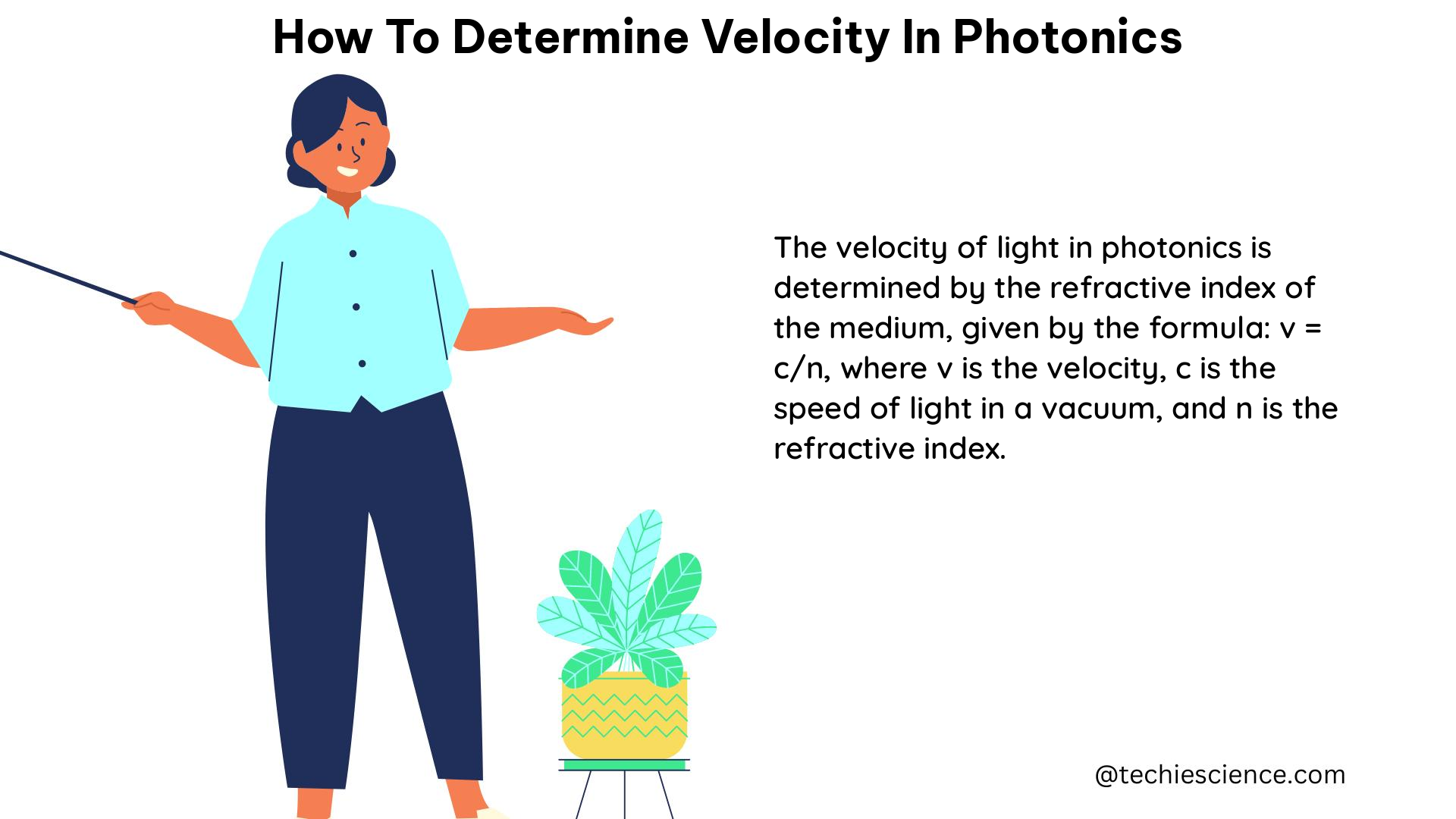Determining velocity in the field of photonics is a crucial aspect of various applications, from medical imaging to high-speed impact measurements. In this comprehensive guide, we will delve into the intricacies of two primary methods used to measure velocity in photonics: Spectral-domain Optical Coherence Tomography (OCT) and Photonic Doppler Velocimetry (PDV).
Spectral-domain Optical Coherence Tomography (OCT)
Optical Coherence Tomography (OCT) is an imaging technique that utilizes light to capture high-resolution, cross-sectional images of biological tissues. In the context of velocity determination, OCT is often employed in a variant called Split-Spectrum Amplitude-Decorrelation Angiography (SSADA).
Measurable Quantities in SSADA
-
Decorrelation Signal: The decorrelation signal in SSADA is linearly related to velocity over a limited range. The saturation velocities of this signal are proportional to the SSADA time scale.
-
Formula: The decorrelation signal,
D, is related to the velocity,v, by the equation:D = k * v, wherekis a constant that depends on the SSADA time scale. -
Example: If the SSADA time scale is 1 ms, the decorrelation signal will be linearly related to velocity up to around 10 mm/s, after which it will start to saturate.
-
Time Scale of SSADA Measurement: The time scale of the SSADA measurement determines the range of velocities that can be accurately measured.
-
Numerical Problem: To enable capillary velocity quantification within the linear range, an imaging speed of 1.4 million A-lines per second (1.4 MHz) is needed.
-
Data Point: Increasing the SSADA time scale can extend the linear range of the decorrelation signal, but this comes at the cost of reduced temporal resolution.
-
Angle Dependence: The variation in the decorrelation signal due to the Doppler angle is small and much reduced compared to previous work using non-split-spectrum intensity-based angiography.
-
Measurement: The Doppler angle,
θ, is the angle between the flow direction and the OCT beam. The decorrelation signal is proportional tocos(θ). - Figure: The figure below shows the relationship between the decorrelation signal and the Doppler angle.
-
Imaging Speed: To enable capillary velocity quantification within the linear range, an imaging speed of 1.4 million A-lines per second (1.4 MHz) is needed.
-
Data Point: Increasing the imaging speed can extend the linear range of the decorrelation signal, but this comes at the cost of reduced signal-to-noise ratio.
- Numerical Problem: Suppose the target velocity range is 0-20 mm/s. To measure this range within the linear region of the decorrelation signal, an imaging speed of at least 1.4 MHz is required.
Photonic Doppler Velocimetry (PDV)

Photonic Doppler Velocimetry (PDV) is a fiber-based diagnostic technique used to measure velocities under extreme conditions, such as high-speed impact and explosive detonation. PDV utilizes a laser to illuminate the target and detects the Doppler shift in the backscattered light to determine the velocity of the target.
Measurable Quantities in PDV
-
Effective Bandwidth: PDV can track motion above 40 km/s, corresponding to more than 50 GHz of the effective bandwidth using 25 GHz equipment.
-
Formula: The effective bandwidth,
B, is related to the maximum measurable velocity,v_max, by the equation:B = 2 * v_max / λ, whereλis the wavelength of the laser. -
Example: If the laser wavelength is 1550 nm, the effective bandwidth required to measure velocities up to 40 km/s is approximately 51.6 GHz.
-
Discrete Wavelengths: PDV can use several discrete wavelengths to enhance the accuracy of surface reconstruction, allowing for measurements with accuracies ranging from a full surface to fractions of a micron.
-
Data Point: Typical PDV systems use multiple laser wavelengths, such as 1550 nm, 1310 nm, and 1064 nm, to improve the accuracy of surface reconstruction.
-
Numerical Problem: Suppose a PDV system uses three discrete wavelengths: 1550 nm, 1310 nm, and 1064 nm. If the target surface is moving at a velocity of 20 km/s, calculate the Doppler shift for each wavelength.
-
Distance Measurements: PDV can determine the distance to the target based on the wavelength of the light focused onto the sensor after it has made a return trip from the probe to the test optic.
-
Formula: The distance,
d, is related to the wavelength,λ, and the Doppler shift,Δf, by the equation:d = c / (2 * Δf), wherecis the speed of light. - Example: If the Doppler shift is 10 GHz and the laser wavelength is 1550 nm, the distance to the target is approximately 15 mm.
In summary, to determine velocity in photonics, various measurable quantities, such as decorrelation signal, time scale, angle dependence, imaging speed, effective bandwidth, discrete wavelengths, and distance measurements, can be utilized depending on the specific technique employed. Understanding these parameters and their relationships is crucial for accurate velocity measurements in photonics applications.
References
- Split-Spectrum Amplitude-Decorrelation Angiography with Optical Coherence Tomography
- Extreme measurements with Photonic Doppler Velocimetry (PDV)
- Measurable Quantity
- Measuring Aspheres: Selecting the Best Technique
- Extreme measurements with Photonic Doppler Velocimetry (PDV)

The lambdageeks.com Core SME Team is a group of experienced subject matter experts from diverse scientific and technical fields including Physics, Chemistry, Technology,Electronics & Electrical Engineering, Automotive, Mechanical Engineering. Our team collaborates to create high-quality, well-researched articles on a wide range of science and technology topics for the lambdageeks.com website.
All Our Senior SME are having more than 7 Years of experience in the respective fields . They are either Working Industry Professionals or assocaited With different Universities. Refer Our Authors Page to get to know About our Core SMEs.